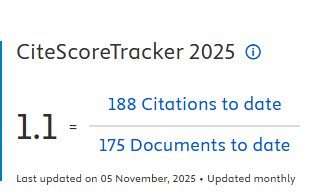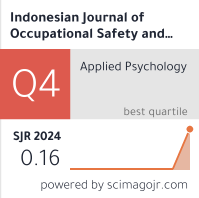Spiritual Intelligence, Emotional Labour and Work-Related Burnout: Investigating the Complex Relationships
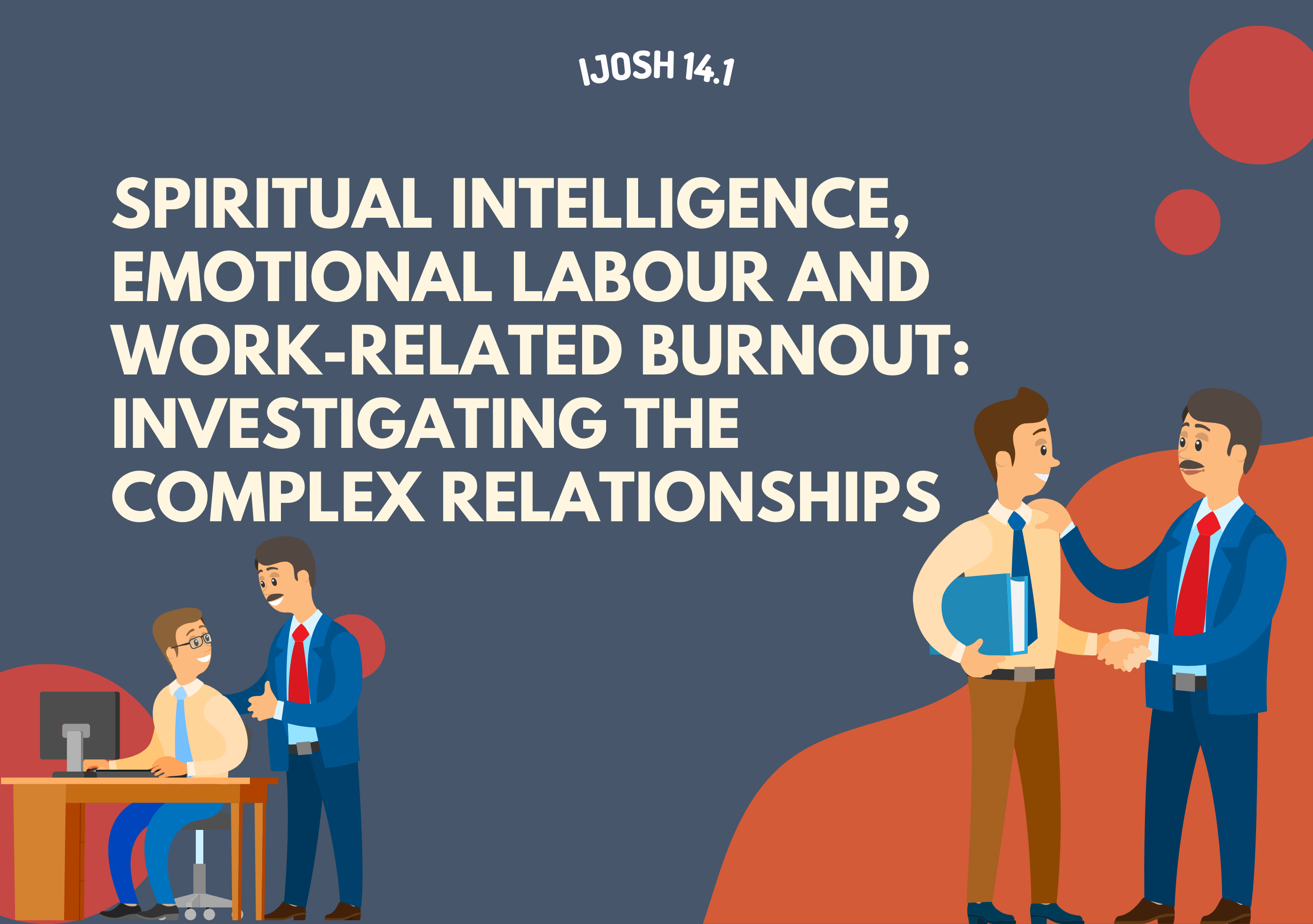
Downloads
Introduction: Human resource (HR) managers shoulder numerous workforce restructurings to mitigate escalating problems before and after the COVID-19 pandemic and ensure business performance stability. Like other functional managers, HR managers undergo pressures that push them to high work stress, leading to work-related burnout (WBO). Although the issues are essential, the lack of highlights in media reduces research attention and fact reporting. This study explores the function of spiritual intelligence (SQ) and emotional labour strategies (deep and surface acting) in mitigating HR managers’ WBO. Methods: A stratified random sampling method and a validated self-administered online survey enabled the voluntary participation and analysis of 311 HR managers from ISO 9001-certified manufacturing companies in Malaysia. Results: The results suggest that SQ increases emotional labour deep-acting (ELDA) and limits surface-acting (ELSA), significantly reducing WBO. Testing for the indirect effects reveals that ELDA and ELSA mediate the association between SQ and WBO, which signifies the importance of emotional labour strategies. Conclusion: The findings benefit manufacturing industry management by helping them better understand the role of SQ and emotional labour strategies in reducing the escalation of WBO among HR managers. Managing directors can utilise the present study to evaluate their company’s procedures, make necessary reforms, improve workplace culture, and provide better support for the HR managers who can shoulder significant staffing management without getting into burnout. Implications for relevant industries and future research directions are proposed.
Adams, I.T. and Mastracci, S.H. (2020) ‘Contrasting Emotional Labor and Burnout in Civilian and Sworn Law Enforcement Personnel’, Policing: An International Journal, 43(2), pp. 314–329. https://doi.org/10.1108/pijpsm-06-2019-0094
Anas, I. and Hamzah, S.R. (2022) ‘Predicting Career Adaptability of Fresh Graduates through Personal Factors’, European Journal of Training and Development, 46(3/4), pp. 302–316. https://doi.org/10.1108/EJTD-02-2020-0023
Arnout, B.A. (2019) ‘A Structural Equation Model relating Unemployment Stress, Spiritual Intelligence, and Mental Health Components: Mediators of Coping Mechanism’, Journal of Public Affairs, 20(2). https://doi.org/10.1002/pa.2025
Ayachit, M. and Chitta, S. (2021) ‘A Systematic Review of Burnout Studies from the Hospitality Literature’, Journal of Hospitality Marketing &; Management, 31(2), pp. 125–144. https://doi.org/10.1080/19368623.2021.1957743
Bodenheimer, G. and Shuster, S.M. (2019) ‘Emotional Labour, Teaching and Burnout: Investigating Complex Relationships’, Educational Research, 62(1), pp. 63–76. https://doi.org/10.1080/00131881.2019.1705868
Brotheridge, C.M. and Grandey, A.A. (2002) ‘Emotional Labor and Burnout: Comparing Two Perspectives of “People Work”’, Journal of Vocational Behavior, 60(1), pp. 17–39. https://doi.org/10.1006/jvbe.2001.1815.
Brotheridge, C.M. and Lee, R.T. (2003) ‘Development and validation of the Emotional Labour Scale’, Journal of Occupational and Organizational Psychology, 76(3), pp. 365–379. https://doi.org/10.1348/096317903769647229
Cayrat, C. and Boxall, P. (2023) ‘The Roles of the HR Function: A Systematic Review of Tensions, Continuity and Change’, Human Resource Management Review, 33(4), p. 100984. https://doi.org/https://doi.org/10.1016/j.hrmr.2023.100984
Clari, M. et al. (2022) ‘Multi-level Analysis of Individual and Work Environment Factors Associated with Nurses’ Perceived Emotional Exhaustion’, Applied Nursing Research, 63, p. 151514. https://doi.org/10.1016/j.apnr.2021.151514
Collings, D.G. et al. (2021) ‘Strategic Human Resource Management and COVID‐19: Emerging Challenges and Research Opportunities’, Journal of Management Studies, 58(5), pp. 1378–1382. https://doi.org/10.1111/joms.12695
Contreras, F., Espinosa, J.C. and Esguerra, G.A. (2020) ‘Could Personal Resources Influence Work Engagement and Burnout? A Study in a Group of Nursing Staff’, SAGE Open, 10(1), p. 215824401990056. https://doi.org/10.1177/2158244019900563
Correia Leal, C., Ferreira, A.I. and Carvalho, H. (2022) ‘“Hide Your Sickness and Put on a Happy Face”: The Effects of Supervision Distrust, Surface Acting, and Sickness Surface Acting on Hotel Employees’ Emotional Exhaustion’, Journal of Organizational Behavior, 44(6), pp. 871–887. https://doi.org/10.1002/job.2676
Cottingham, M.D. (2022) Practical Feelings: Emotions as Resources in a Dynamic Social World. Oxford University Press. https://doi.org/10.1093/oso/9780197613689.001.0001
Gabay, N. and Weinstein, S. (2022) ‘The Conjoint Effect of Workplace Spirituality and Emotional Labour on Service Providers’ Well-being: A Moderated Mediation Model’, Journal of Human Values, 28(2), pp. 115–128. https://doi.org/10.1177/09716858221082705
Gu, Y. and You, X. (2019) ‘Recovery Experiences Buffer Against Adverse Well‐being Effects of Workplace Surface Acting: A Two‐Wave Study of Hospital Nurses’, Journal of Advanced Nursing, 76(1), pp. 209–220. https://doi.org/10.1111/jan.14236
Hatfield, E. et al. (2014) ‘New Perspectives on Emotional Contagion: A Review of Classic and Recent Research on Facial Mimicry and Contagion’, Interpersona: An International Journal on Personal Relationships, 8(2), pp. 159–179. https://doi.org/10.5964/ijpr.v8i2.162
Hwang, J., Song, E.K. and Ko, S. (2022) ‘Relationships among Basic Psychological Needs, Organisational Commitment, Perceived Authentic Leadership and Turnover Intention in Korean Nurses: A Cross‐sectional Study’, Journal of Nursing Management, 30(7), pp. 2176–2184. https://doi.org/10.1111/jonm.13546
Jeung, D.-Y. and Chang, S.-J. (2021) ‘Moderating Effects of Organizational Climate on the Relationship between Emotional Labor and Burnout among Korean Firefighters’, International Journal of Environmental Research and Public Health, 18(3), p. 914. https://doi.org/10.3390/ijerph18030914
Jomuad, P.D. et al. (2021) ‘Teachers’ workload in relation to burnout and work performance’, in. Available at: https://api.semanticscholar.org/CorpusID:249635338
Kang, H. (2021) ‘Sample Size Determination and Power Analysis using the G*Power Software’, Journal of Educational Evaluation for Health Professions, 18, p. 17. https://doi.org/10.3352/jeehp.2021.18.17
Kessler, M. and Arlinghaus, J.C. (2022) ‘A Framework for Human-centered Production Planning and Control in Smart Manufacturing’, Journal of Manufacturing Systems, 65, pp. 220–232. https://doi.org/10.1016/j.jmsy.2022.09.013
Khalid, A. et al. (2020) ‘The Impact of Occupational Stress on Job Burnout Among Bank Employees in Pakistan, With Psychological Capital as a Mediator’, Frontiers in Public Health, 7. https://doi.org/10.3389/fpubh.2019.00410
Kim, H. and Leach, R.B. (2021) ‘Mitigating Burnout Through Organisational Justice: Customer Support Workers’ Experiences of Customer Injustice and Emotional Labor’, Management Communication Quarterly, 35(4), pp. 497–517. https://doi.org/10.1177/08933189211012040
Kim, J. (2019) ‘Emotional Labor Strategies, Stress, and Burnout Among Hospital Nurses: A Path Analysis’, Journal of Nursing Scholarship, 52(1), pp. 105–112. https://doi.org/10.1111/jnu.12532
King, D.B. and DeCicco, T.L. (2009) ‘A Viable Model and Self-Report Measure of Spiritual Intelligence’, International Journal of Transpersonal Studies, 28(1), pp. 68–85. https://doi.org/10.24972/ijts.2010.28.1.68
Kristensen, T.S. et al. (2005) ‘The Copenhagen Burnout Inventory: A New Tool for the Assessment of Burnout’, Work & Stress, 19(3), pp. 192–207. https://doi.org/10.1080/02678370500297720
Lartey, J.K.S. et al. (2020) ‘Emotional experiences and coping strategies of nursing and midwifery practitioners in Ghana: a qualitative study’, BMC Nursing, 19(1). https://doi.org/10.1186/s12912-020-00484-0
Lee, M. and Jang, K.-S. (2019) ‘Nurses’ Emotions, Emotional Labor, and Job Satisfaction’, International Journal of Workplace Health Management, 13(1), pp. 16–31. https://doi.org/10.1108/ijwhm-01-2019-0012
Lim, J. and Moon, K.-K. (2024) ‘The Effect of Emotional Labor on Psychological Well-Being in the Context of South Korean Firefighters: The Moderating Role of Transformational Leadership’, Behavioral Sciences, 14(3). https://doi.org/10.3390/bs14030167
Lischetzke, T. et al. (2019) ‘Are Those Who Tend to Mimic Facial Expressions Especially Vulnerable to Emotional Contagion?’, Journal of Nonverbal Behavior, 44(1), pp. 133–152. https://doi.org/10.1007/s10919-019-00316-z
Lu, D. and Hong, D. (2022) ‘Emotional Contagion: Research on the Influencing Factors of Social Media Users’ Negative Emotional Communication During the COVID-19 Pandemic’, Frontiers in Psychology, 13. https://doi.org/10.3389/fpsyg.2022.931835
Maslach, C. and Leiter, M.P. (2022) The Burnout Challenge: Managing People’s Relationships with Their Jobs. Massachusetts: Harvard University Press. https://doi.org/10.4159/9780674287297
Moon, Y.-K., O’Brien, K.E. and Mann, K.J. (2023) ‘The role of extraversion in the Great Resignation: A burnout-quitting process during the pandemic’, Personality and Individual Differences, 205, p. 112074. https://doi.org/10.1016/j.paid.2022.112074
Nurochim, N.A. et al. (2022) ‘Investigating the Relationship between Spiritual Intelligence, Emotional Regulation and Stress Coping Strategies in the Russian Education Industry’, International Journal of Work Organisation and Emotion, 13(3), p. 212. https://doi.org/10.1504/ijwoe.2022.126952
Ogunsola, K.O., Fontaine, R. A. H. and Jan, M.T. (2020a) ‘Enhancing Service Personnel's Emotional Labour Techniques: An Empirical Case for Spiritual Intelligence’, International Journal of Islamic Business Ethics, 5(2), p. 125. https://doi.org/10.30659/ijibe.5.2.125-144
Ogunsola, K.O., Fontaine, R. A. Harvey and Jan, M.T. (2020b) ‘Impact of Surface Acting and Deep Acting Techniques on Teachers’ Organisational Commitment’, PSU Research Review, 4(1), pp. 61–79. https://doi.org/10.1108/PRR-10-2019-0031
Petitta, L. et al. (2020) ‘Economic Stress, Emotional Contagion and Safety Outcomes: A Cross-Country Study’, Work, 66(2), pp. 421–435. https://doi.org/10.3233/wor-203182
Petitta, L. and Jiang, L. (2020) ‘How Emotional Contagion Relates to Burnout: A Moderated Mediation Model of Job Insecurity and Group Member Prototypicality.’, International Journal of Stress Management, 27(1), pp. 12–22. https://doi.org/10.1037/str0000134
Pishghadam, R. et al. (2022) Interplay of Psychological Reactance, Burnout, and Spiritual Intelligence: A Case of Iranian EFL Teachers’, Revista de Psicodidáctica (English ed.), 27(1), pp. 76–85. https://doi.org/10.1016/j.psicoe.2021.06.002
Richardson, S.D. (2023) ‘Reimagining Quiet Quitting’, in Ng, E.S. (Ed.), Palgrave Studies in Equity, Diversity, Inclusion, and Indigenization in Business. Springer International Publishing, pp. 105–117. https://doi.org/10.1007/978-3-031-29211-8_8
Riforgiate, S.E., Howes, S.S. and Simmons, M.J. (2021) ‘The Impact of Daily Emotional Labor on Health and Well-Being’, Management Communication Quarterly, 36(3), pp. 391–417. https://doi.org/10.1177/08933189211041352.
Ringle, C.M. et al. (2018) ‘Partial Least Squares Structural Equation Modeling in HRM Research’, The International Journal of Human Resource Management, 31(12), pp. 1617–1643. https://doi.org/10.1080/09585192.2017.1416655.
Roloff, J. et al. (2022) ‘How Strongly is Personality Associated With Burnout Among Teachers? A Meta-analysis’, Educational Psychology Review, 34(3), pp. 1613–1650. https://doi.org/10.1007/s10648-022-09672-7.
Saleh, T.A. et al. (2022) ‘The Impact of Ethical Leadership on Employees Turnover Intention: An Empirical Study of the Banking Sector in Malaysia’, Journal of Asian Finance, Economics and Business, 9(2), pp. 0261–0272.
Skrzypińska, K. (2020) ‘Does Spiritual Intelligence (SI) Exist? A Theoretical Investigation of a Tool Useful for Finding the Meaning of Life’, Journal of Religion and Health, 60(1), pp. 500–516. https://doi.org/10.1007/s10943-020-01005-8.
The World Bank (2023) Manufacturing, value added (Percentage of GDP), Manufacturing, value added (Percentage of GDP)., Available at: https://data.worldbank.org/indicator/NV.IND.MANF.ZS (Accessed: 9 September 2023).
Theodosius, C. et al. (2020) ‘Collegial Surface Acting Emotional Labour, Burnout and Intention to Leave in Novice and Pre‐retirement Nurses in the United Kingdom: A Cross‐sectional Study’, Nursing Open, 8(1), pp. 463–472. https://doi.org/10.1002/nop2.649.
Trullen, J., Bos‐Nehles, A. and Valverde, M. (2020) ‘From Intended to Actual and Beyond: A Cross‐Disciplinary View of (Human Resource Management) Implementation’, International Journal of Management Reviews, 22(2), pp. 150–176. https://doi.org/10.1111/ijmr.12220.
Tulili, T.R., Capiluppi, A. and Rastogi, A. (2023) ‘Burnout in Software Engineering: A Systematic Mapping Study’, Information and Software Technology, 155, p. 107116. https://doi.org/10.1016/j.infsof.2022.107116.
Vansoeterstede, A. et al. (2022) ‘A Systematic Review of Longitudinal Changes in School Burnout among Adolescents: Trajectories, Predictors, and Outcomes’, Journal of Adolescence, 95(2), pp. 224–247. https://doi.org/10.1002/jad.12121.
Vasconcelos, A.F. (2020) ‘Spiritual Intelligence: A Theoretical Synthesis and Work-life Potential Linkages’, International Journal of Organizational Analysis, 28(1), pp. 109–134. https://doi.org/10.1108/ijoa-04-2019-1733.
Wang, Y. and Chen, H. (2022) ‘Are Human Resource Managers with Good Listening Competency more Likely to Avoid Job Burnout?’, BMC Public Health, 22(1). https://doi.org/10.1186/s12889-022-12618-x.
Yang, K. and Jang, H. (2022) ‘Mechanisms Linking Emotional Labour and Emotional Exhaustion: Combining Two Different Perspectives’, Asian Journal of Social Psychology, 25(4), pp. 688–700. https://doi.org/10.1111/ajsp.12530.
Zaghini, F. et al. (2020) ‘The role of Occupational Stress in the Association between Emotional Labor and Burnout in Nurses: A Cross-sectional Study’, Applied Nursing Research, 54, p. 151277. https://doi.org/10.1016/j.apnr.2020.151277.
Zapf, D. et al. (2021) ‘Emotion Work: A Work Psychology Perspective’, Annual Review of Organizational Psychology and Organizational Behavior, 8(1), pp. 139–172. https://doi.org/10.1146/annurev-orgpsych-012420-062451.

This work is licensed under a Creative Commons Attribution-NonCommercial-ShareAlike 4.0 International License.

In order to be accepted and published by The Indonesian Journal of Occupational Safety and Health, Author(s) who submit an article should complete all the review process. The copyright of received articles assigned to the The Indonesian Journal of Occupational Safety and Health and Department of Safety and Health, Universitas Airlangga as publishers of the journal. The intended copyright includes the rights to publish articles in various forms (including reprints).
The Editorial Team of The Indonesian Journal Of Occupational Safety and Health and Department of Safety and Health strive to ensure that no errors occur in the articles that have been published, both data errors and statements in the article.
Users of this website will be licensed to use materials from this website following the Creative Commons Attribution-NonCommercial-ShareAlike 4.0 International License. No fees charged. Please use the materials accordingly.
------------------------------------------------------------------------------------------------------------------------------------------------------------------------------------------
Attribution ” You must give appropriate credit, provide a link to the license, and indicate if changes were made. You may do so in any reasonable manner, but not in any way that suggests the licensor endorses you or your use.
NonCommercial ” You may not use the material for commercial purposes.
ShareAlike ” If you remix, transform, or build upon the material, you must distribute your contributions under the same license as the original.

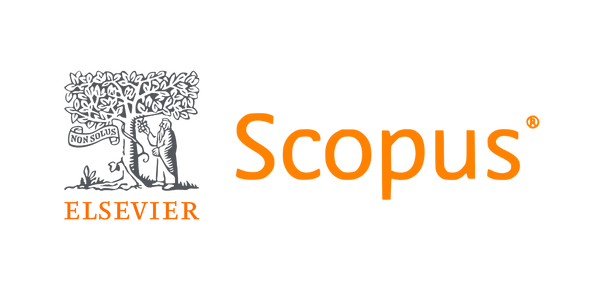
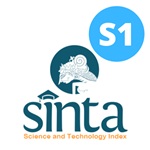




 How to Submit Articles in OJS
How to Submit Articles in OJS
